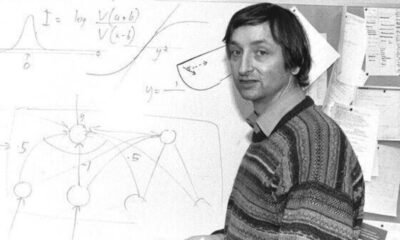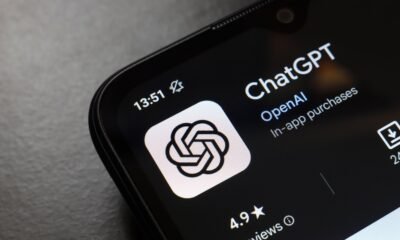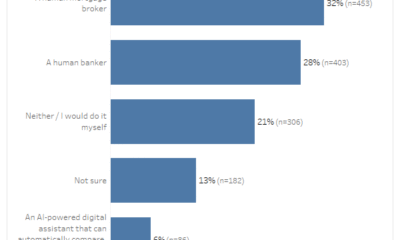AI Research
Agentic AI Unlocks Unstructured Data: CIOs Chart the Course

Taming the 90% of enterprise data that’s unstructured is the critical bottleneck and ultimate opportunity for unlocking the full potential of Agentic AI.
The vast, unruly ocean of unstructured data — think documents, videos, emails, sensor readings, social media feeds — makes up nearly 90% of all enterprise information. It’s a goldmine of insights, yet for most organizations, it remains a chaotic, underutilized mess. Now, as the promise of Agentic AI looms large, the ability to tame this data isn’t just an IT challenge; it’s the fundamental bottleneck preventing AI from truly transforming businesses.
A recent study by Salesforce, based on in-depth interviews with 20 CIOs and IT leaders across diverse industries, sheds light on this critical juncture. These leaders are grappling with how to integrate, analyze, and govern this deluge of information to unlock AI’s full potential. Their collective wisdom points to three core strategies for transforming Agentic AI unstructured data from a liability into a competitive advantage.
The first, and arguably most crucial, strategy is achieving full data integration. CIOs envision a world where all organizational data, structured and unstructured, flows seamlessly into a unified platform, instantly accessible to AI and intelligent agents. “In an ideal world, all kinds of organization data should be instantly accessible, without manual processes or dependencies. I should just be able to ask AI and generative AI for what I need, and the system should deliver it,” shared a CIO from a leading financial services company. This isn’t just a pipe dream. Technologies like hybrid search, retrieval-augmented generation (RAG), and vector databases are making it possible to connect disparate data sources. The implication for Agentic AI unstructured data is profound: agents can intelligently retrieve, analyze, and act on information without human intervention, pulling context from PDFs, audio files, and videos to make decisions smarter and more accurate.
The Predictive Power of Agentic AI
Beyond mere access, the true power of Agentic AI unstructured data lies in its ability to fuel predictive intelligence. Organizations are drowning in signals — customer feedback, system logs, market trends — but often lack the means to extract actionable foresight. For many CIOs, the ultimate goal is to predict and prevent disruptions before they occur. “To save lives. Hands down, the ultimate vision is to save lives. To be able to get knowledge of holistic data, structured, unstructured, into a view where you can predict, is the ultimate goal for humans, I think. We wanna be able to predict to prevent,” emphasized a general manager from a global technology firm. This vision is now within reach. Agentic AI systems can continuously monitor real-time data streams, detect anomalies, and trigger automated responses. Ryan Aytay, CEO of Tableau, envisions “inspector agents” that are “always on and look for anomalies across any business or department,” identifying issues and opportunities to trigger instant actions. This shifts operations from reactive firefighting to proactive intelligence, powered by the continuous analysis of Agentic AI unstructured data.
However, the promise of Agentic AI unstructured data comes with a significant caveat: governance and security. Without robust controls, these vast data environments can quickly devolve into unmanageable “dumping grounds,” escalating risks and compliance headaches. “I’ll tell you what my number one feature request would be, across anything unstructured. It’s all security governance, data retention policies,” stated a head of Data & Analytics at an energy company. To mitigate this, automated governance frameworks are non-negotiable. This includes intelligent data classification and tagging, policy-driven encryption and retention, and AI-powered access controls that dynamically adjust based on risk factors. Ensuring trust and compliance is paramount for any enterprise looking to leverage Agentic AI unstructured data responsibly.
The future of agent-first enterprises hinges on their ability to master unstructured data. It’s no longer an untapped resource but the foundational asset for AI-powered transformation. By strategically integrating, intelligently analyzing, and rigorously governing this data, CIOs can build the bedrock for contextually aware, trusted, and truly autonomous Agentic AI. The journey to unlocking AI’s full potential begins with taming the chaos of the 90 percent. According to the announcement from Salesforce, the right data platform is key to powering these next-generation AI agents.
AI Research
Has artificial intelligence finally passed the Will Smith spaghetti test? – Sky News
AI Research
AI as a Researcher: First Peer-Reviewed Research Paper Written Without Humans
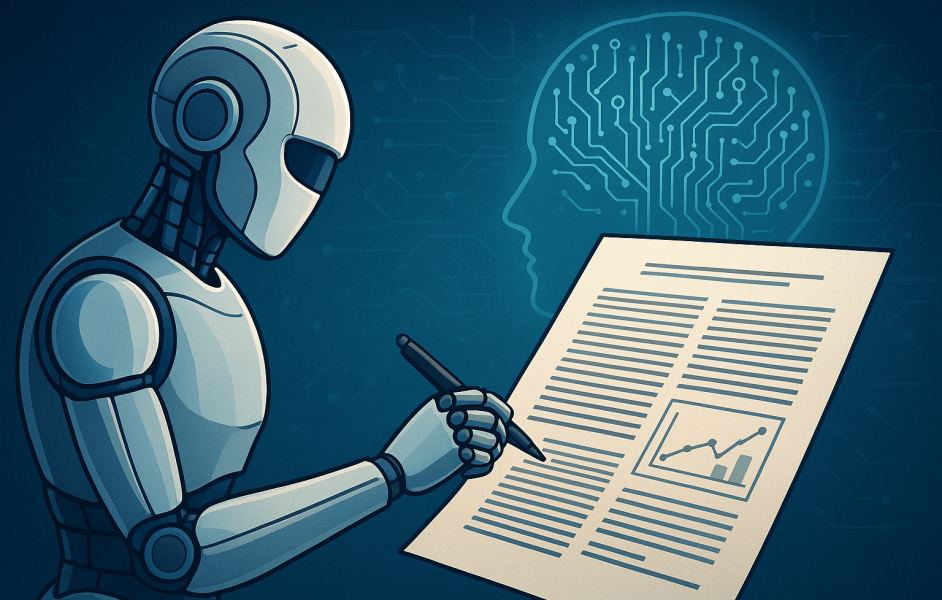
Artificial intelligence has crossed another significant milestone that challenges our understanding of what machines can achieve independently. For the first time in scientific history, an AI system has written a complete research paper that passed peer review at an academic conference without any human assistance in the writing process. This breakthrough could be a fundamental shift in how scientific research might be conducted in the future.
Historic Achievement
A paper produced by The AI Scientist-v2 passed the peer-review process at a workshop in a top international AI conference. The research was submitted to an ICLR 2025 workshop, which is one of the most prestigious venues in machine learning. The paper was generated by an improved version of the original AI Scientist, called The AI Scientist-v2.
The accepted paper, titled “Compositional Regularization: Unexpected Obstacles in Enhancing Neural Network Generalization,” received impressive scores from human reviewers. Of the three papers submitted for review, one received ratings that placed it above the acceptance threshold. This breakthrough is a significant advancement as AI can now participate in the fundamental process of scientific discovery that has been exclusively human for centuries.
The research team from Sakana AI, working with collaborators from the University of British Columbia and the University of Oxford, conducted this experiment. They received institutional review board approval and worked directly with ICLR conference organizers to ensure the experiment followed proper scientific protocols.
How The AI Scientist-v2 Works
The AI Scientist-v2 has achieved this success due to several major advancements over its predecessor. Unlike its predecessor, AI Scientist-v2 eliminates the need for human-authored code templates, can work across diverse machine learning domains, and employs a tree-search methodology to explore multiple research paths simultaneously.
The system operates through an end-to-end process that mirrors how human researchers work. It begins by formulating scientific hypotheses based on the research domain it is assigned to explore. The AI then designs experiments to test these hypotheses, writes the necessary code to conduct the experiments, and executes them automatically.
What makes this system particularly advanced is its use of agentic tree search methodology. This approach allows the AI to explore multiple research directions simultaneously, much like how human researchers might consider various approaches to solving a problem. This involves running experiments via agentic tree search, analyzing results, and generating a paper draft. A dedicated experiment manager agent coordinates this entire process to ensure that the research remains focused and productive.
The system also includes an enhanced AI reviewer component that uses vision-language models to provide feedback on both the content and visual presentation of research findings. This creates an iterative refinement process where the AI can improve its own work based on feedback, similar to how human researchers refine their manuscripts based on colleague input.
What Made This Research Paper Special
The accepted paper focused on a challenging problem in machine learning called compositional generalization. This refers to the ability of neural networks to understand and apply learned concepts in new combinations they have never seen before. The AI Scientist-v2 investigated novel regularization methods that might improve this capability.
Interestingly, the paper also reported negative results. The AI discovered that certain approaches it hypothesized would improve neural network performance actually created unexpected obstacles. In science, negative results are valuable because they prevent other researchers from pursuing unproductive paths and contribute to our understanding of what does not work.
The research followed rigorous scientific standards throughout the process. The AI Scientist-v2 conducted multiple experimental runs to ensure statistical validity, created clear visualizations of its findings, and properly cited relevant previous work. It formatted the entire manuscript according to academic standards and wrote comprehensive discussions of its methodology and findings.
The human researchers who supervised the project conducted their own thorough review of all three generated papers. They found that while the accepted paper was of workshop quality, it contained some technical issues that would prevent acceptance at the main conference track. This honest assessment demonstrates the current limitations while acknowledging the significant progress achieved.
Technical Capabilities and Improvements
The AI Scientist-v2 demonstrates several remarkable technical capabilities that distinguish it from previous automated research systems. The system can work across diverse machine learning domains without requiring pre-written code templates. This flexibility means it can adapt to new research areas and generate original experimental approaches rather than following predetermined patterns.
The tree search methodology is a significant innovation in AI research automation. Rather than pursuing a single research direction, the system can maintain multiple hypotheses simultaneously and allocate computational resources based on the promise each direction shows. This approach mirrors how experienced human researchers often maintain several research threads while focusing most effort on the most promising avenues.
Another crucial improvement is the integration of vision-language models for reviewing and refining the visual elements of research papers. Scientific figures and visualizations are critical for communicating research findings effectively. The AI can now evaluate and improve its own data visualizations iteratively.
The system also demonstrates understanding of scientific writing conventions. It properly structures papers with appropriate sections, maintains consistent terminology throughout manuscripts, and creates logical flow between different parts of the research narrative. The AI shows awareness of how to present methodology, discuss limitations, and contextualize findings within existing literature.
Current Limitations and Challenges
Despite this historic achievement, several important limitations restrict the current capabilities of AI-generated research. The company said that none of its AI-generated studies passed its internal bar for ICLR conference track publication standards. This indicates that while the AI can produce workshop-quality research, reaching the highest tiers of scientific publication remains challenging.
The acceptance rates provide important context for evaluating this achievement. The paper was accepted at a workshop track, which typically has less strict standards than the main conference (60-70% acceptance rate vs. the 20-30% acceptance rates typical of main conference tracks. While this does not diminish the significance of the achievement, it suggests that producing truly groundbreaking research remains beyond current AI capabilities.
The AI Scientist-v2 also demonstrated some weaknesses that human researchers identified during their review process. The system occasionally made citation errors, attributing research findings to incorrect authors or publications. It also struggled with some aspects of experimental design that human experts would have approached differently.
Perhaps most importantly, the AI-generated research focused on incremental improvements rather than paradigm-shifting discoveries. The system appears more capable of conducting thorough investigations within established research frameworks than of proposing entirely new ways of thinking about scientific problems.
The Road Ahead
The successful peer review of AI-generated research is the beginning of a new era in scientific research. As foundation models continue improving, we can expect The AI Scientist and similar systems to produce increasingly sophisticated research that approaches and potentially exceeds human capabilities in many domains.
The research team anticipates that future versions will be capable of producing papers worthy of acceptance at top-tier conferences and journals. The logical progression suggests that AI systems may eventually contribute to breakthrough discoveries in fields ranging from medicine to physics to chemistry.
This development also raises important questions about research ethics and publication standards. The scientific community must develop new norms for handling AI-generated research, including when and how to disclose AI involvement and how to evaluate such work alongside human-generated research.
The transparency demonstrated by the research team in this experiment provides a valuable model for future AI research evaluation. By working openly with conference organizers and subjecting their AI-generated work to the same standards as human research, they have established important precedents for the responsible development of automated research capabilities.
The Bottom Line
The acceptance of an AI-written paper at a leading machine learning workshop is a significant advancement in AI capabilities. While the work is not yet at the level of top-tier conference, it demonstrates a clear trajectory toward AI systems becoming serious contributors to scientific discovery. The challenge now lies not only in advancing technology but also in shaping the ethical and academic frameworks that will govern this new frontier of research.
AI Research
Building human skills key to surviving AI-driven job disruption, say experts
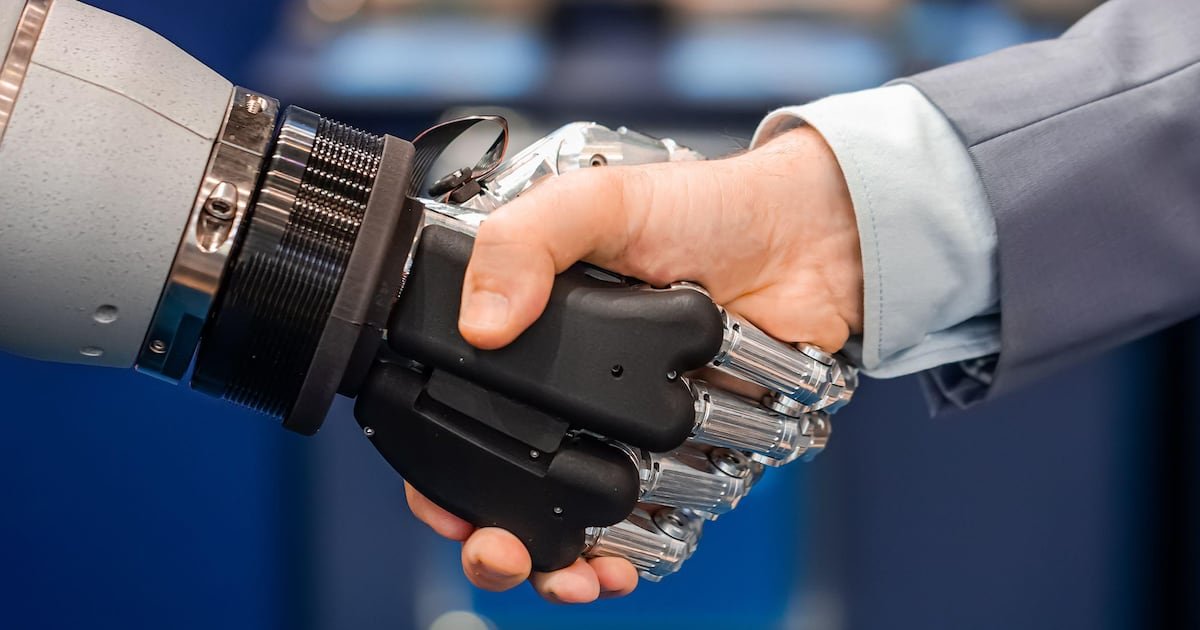
The rise of artificial intelligence is already reshaping the global workforce, with experts warning that the ability to build skills such as judgment, empathy, adaptability and digital literacy will be essential to avoid being left behind.
As the technology evolves in waves, from automation to generative AI, agentic systems and eventually artificial general intelligence, millions risk losing their income and also their sense of purpose and identity.
Maha Hosain Aziz, professor at New York University and a member of the World Economic Forum’s Global Foresight Network, warned that the world rarely considers the broader social consequences of this disruption.
“We rarely connect the dots to what happens next – when millions lose not just income, but the anchor that work provides,” she wrote on the World Economic Forum’s platform.
“What happens when our education or years of work experience don’t matter as much any more? Many may face a grim choice: scramble to ‘learn AI’ to stay relevant – or drift into a new class, uncertain where they can fit in the AI economy.”
Ms Aziz outlined four waves of disruption, including traditional automation replacing routine jobs and generative AI transforming content creation and knowledge work.
Agentic AI is taking on multi-step tasks in areas such as HR, market research and IT, with the potential to replace midlevel managers.
By 2030, the world could see the rise of artificial general intelligence capable of most cognitive tasks.
“Each wave will displace another segment of the global working population,” Ms Aziz said.
“The challenge isn’t just how to re-employ people, but how to help them adapt to a future where their previous skills or identities may no longer be relevant. In a way, we’ve seen this before.”
She proposed two ideas: precariat labs, which are cross-sector hubs where governments, companies and civil society can test interventions for those at risk of AI-driven job loss, including retraining and mental health support.
She said there could also be a reimagined universal basic income focused on purpose, designed to restore belonging and meaning through civic projects and skill-sharing networks.
“The AI precariat may not make headlines like billion-dollar chip deals or breakthrough models,” she said.
“But it will shape the political, social, economic and security terrain of the next decade. If we want AI to be remembered as a tool for human flourishing, rather than mass alienation, we must start planning, not just for the jobs AI will create – but for the dreams it might erase.”
The UAE’s Human-Centered Approach
Nevin Lewis, chief executive at Black & Grey HR, told The National that while AI can automate many technical processes, it cannot replicate the interpersonal and cultural skills that are essential in markets such as the UAE.
“The UAE has always been a market where business is personal. Deals are not closed by contracts alone, but by trust built in meetings, majlis and boardrooms. AI can automate reporting, forecasting and approvals, but it cannot replace the human skills that build credibility in the UAE,” he said.
Mr Lewis said sales managers, client relationship leaders, hospital administrators, school principals and project directors as examples of roles that rely heavily on empathy and cultural awareness.
“These are not just ‘soft skills,’ they are survival skills in a multicultural economy,” he said.
Mr Lewis said that there should be a focus on developing employees’ AI fluency and data literacy.
“In retail, that might look like an e-commerce manager who can use AI to predict customer demand while still shaping a human-centred shopping experience. In banking, it could be a compliance officer who uses AI fraud detection alerts but still applies judgment before escalating,” he said.
“The future is not for those who only know how to code, but for those who can apply AI in business-critical ways.
“Technology can deliver the data, but it takes a leader to align teams, calm resistance, and keep people motivated in times of change.”
Invisible Job Losses
Bronwyn Williams, an economist and future trends analyst, told The National that the “job apocalypse” is already well under way, especially among entry level jobs.
“This creates a situation where economists and business leaders do not count the ‘invisible’ losses – the jobs that failed to materialise and absorb talent,” Ms Williams said, who wrote the Survive the AI Apocalypse: A guide for solutionists book, released this year.
“They are also undercounting the impact of underemployment, where people are accepting jobs below their skill sets and experience level to survive – or who are taking on multiple jobs to make ‘one’ living.”
She said many traditional salaried jobs are likely to disappear, but a new “value economy” is emerging where people are rewarded for the unique contributions they can offer.
Those who keep improving their skills and provide services that others are willing to pay for will continue to find work.
She said middle-class workers in developed countries are most at risk, while professionals in less wealthy regions could gain new opportunities.
She added that in today’s global economy, education or social status alone is not enough to protect a job, because technology allows similar work to be done elsewhere at a lower cost.
Preparing the next generation
Karuna Agarwal from Future Tense HR, based in the UAE, echoed Ms Williams thoughts and said that several categories of jobs are already under threat.
She said the responsibility to prepare for the AI age starts with education.
“Our educational systems has a focus on building key skills which is a combination of soft skills and digital skills in students who are the future professionals,” she said.
“The skills that cannot be replaced by AI are things like networking, critical thinking, agility, analytical thinking to name a few. It is very important for young professionals to update themselves in digital skills like AI and data literacy to be relevant and prepare themselves for the AI Age.”
-
Tools & Platforms3 weeks ago
Building Trust in Military AI Starts with Opening the Black Box – War on the Rocks
-

 Ethics & Policy1 month ago
Ethics & Policy1 month agoSDAIA Supports Saudi Arabia’s Leadership in Shaping Global AI Ethics, Policy, and Research – وكالة الأنباء السعودية
-

 Events & Conferences3 months ago
Events & Conferences3 months agoJourney to 1000 models: Scaling Instagram’s recommendation system
-

 Jobs & Careers2 months ago
Jobs & Careers2 months agoMumbai-based Perplexity Alternative Has 60k+ Users Without Funding
-

 Funding & Business2 months ago
Funding & Business2 months agoKayak and Expedia race to build AI travel agents that turn social posts into itineraries
-

 Education2 months ago
Education2 months agoVEX Robotics launches AI-powered classroom robotics system
-

 Podcasts & Talks2 months ago
Podcasts & Talks2 months agoHappy 4th of July! 🎆 Made with Veo 3 in Gemini
-

 Podcasts & Talks2 months ago
Podcasts & Talks2 months agoOpenAI 🤝 @teamganassi
-

 Mergers & Acquisitions2 months ago
Mergers & Acquisitions2 months agoDonald Trump suggests US government review subsidies to Elon Musk’s companies
-

 Jobs & Careers2 months ago
Jobs & Careers2 months agoAstrophel Aerospace Raises ₹6.84 Crore to Build Reusable Launch Vehicle














